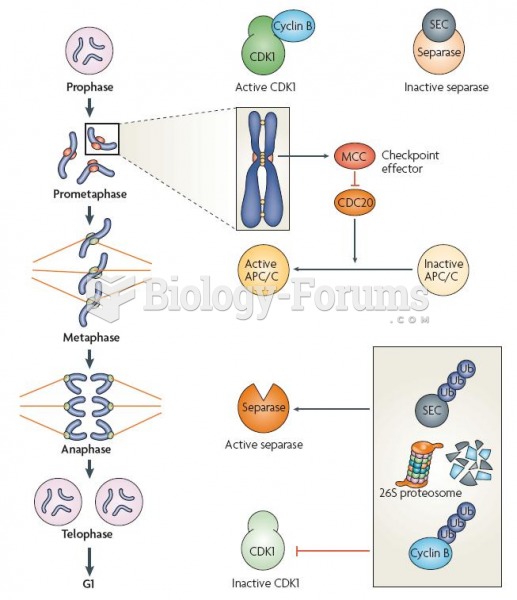Answer to Question 1
Suppose someone asks whether singing ability depends on heredity or environment. That question as stated is meaningless. Unless you had both heredity and environment, you couldn't sing at all. However, we can rephrase the question meaningfully: Do the observed differences among individuals depend more on differences in heredity or differences in environment? For example, if you sin better than someone else, the reason could be different genes, better training, or both. If the variations in some characteristic depend largely on genetic differences, the characteristic has high heritability.
To determine the heritability of any characteristic, researchers rely mainly on three kinds of evidence. First, they compare monozygotic (from one egg) twins and dizygotic (from two ggs) twins. People usually call monozygotic twins identical twins, but that term is misleading, because identical twins often differ in important ways. Some are mirror images of each other. Also, for epigenetic reasons, certain genes may be activated more in one twin than the other. Still, they have the same genes, whereas dizygotic twins do not. A stronger resemblance between monozygotic than dizygotic twins suggests a genetic contribution. However, it is not totally decisive, because people who look alike tend to be treated alike.
A second kind of evidence is studies of adopted children. Any tendency for adopted children to resemble their biological parents suggests a hereditary influence. However, again the evidence is not always decisive. The biological mother contributes not only her genes, but also the prenatalnvironment. A mother's health, diet, and smoking and drinking habits during pregnancy can greatly influence her child's development, especially the brain development. A similarity between an adopted child and the genetic mother could reflect both genetic influences and prenatal
environment.
A third type of evidence is to identify specific genes linked to some behavior. In some cases, researchers test a hypothesis, such as a gene that decreases the activity of the serotonin transporter may be linked to an increased risk of depression.. In other cases, they examine all the genes of people with some condition (such as depression or schizophrenia), looking for any gene that is more common than in the rest of the population. However, this procedure tests thousands of hypotheses at once (one for each gene), and risks reporting a false association. Even a trait with high heritability can be modified by environ- mental interventions. A prime example is phenylketonuria, or PKU, a genetic in- ability to metabolize the amino acid phenylalanine. If PKU is not treated, phenylalanine accumulates to toxic levels, impairing brain development and leaving a child mentally retarded, restless, and irritable. Approximately one percent of Europeans carry a recessive gene for PKU. Fewer Asians and almost no Africans have the gene.
Although PKU is a hereditary condition, environmental interventions can modify it. Physicians in many countries routinely test the level of phenylalanine or its metabolites in babies' blood or urine. If a baby has high levels, indicating PKU, physicians advise the parents to put the baby on a trict low-phenylalanine diet to protect the brain. The success of this diet shows that heritable does not mean unmodifiable.
Answer to Question 2
b






